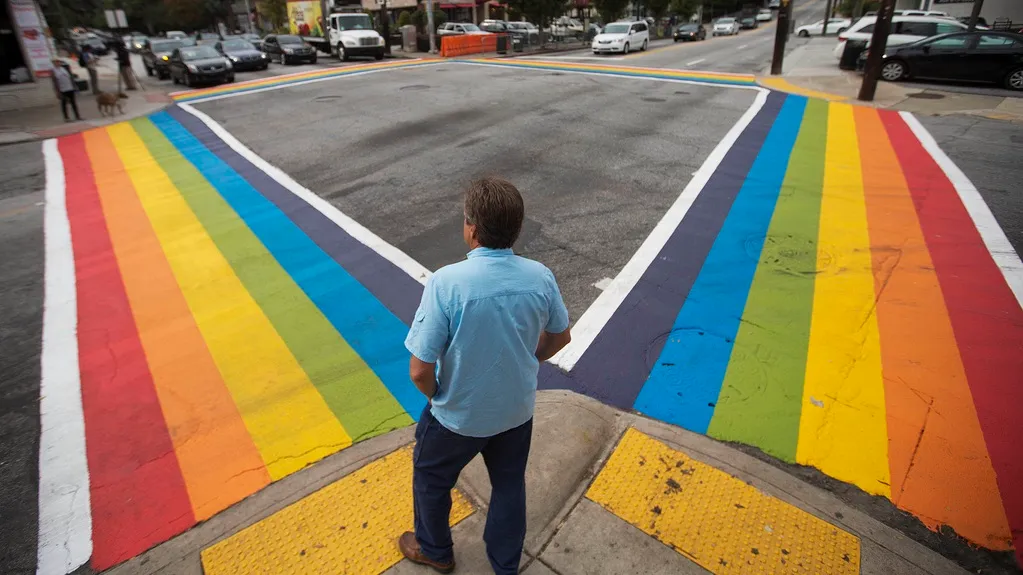August 14, 2016
CDC Study: LGB Students at Higher Risk of Violence
John Riley READ TIME: 4 MIN.
A first-of-its-kind study of students in U.S. high schools has found that LGB students experience higher levels of physical and sexual violence and bullying than their heterosexual peers.
Conducted by the Centers for Disease Control and Prevention (CDC), the report found that lesbian, gay and bisexual youth are more likely to be bullied, assaulted, resort to illicit drug use, or contemplate suicide. The statistics in the CDC's report, which were drawn from student responses to the 2015 National Youth Risk Behavior Survey (YRBS), are simply startling.
Nearly 1 in 5 lesbian, gay or bisexual students has been physically forced to have sexual intercourse, more than three times the rate of their heterosexual peers. LGB students are also more than twice as likely to experience sexual dating violence (23%) and physical dating violence (18%) than heterosexual students.
LGB students are nearly twice as likely to be bullied than heterosexual students, with more than 1 in 3 LGB students being bullied on school property and more than 1 in 4 being bullied online. One in 8 LGB students cuts school because of fear of violence or harassment, 60 percent have felt sad or hopeless, nearly 43 percent have seriously considered committing suicide, and almost 1 in 3 have followed through with those thoughts by attempting to kill themselves.
Drug use is higher among LGB youth than their peers, who are more than twice as likely to use hallucinogenic drugs, four times more likely to have used either meth or heroin, and up to five times more likely to have injected any illegal drug.
"Quantifying these risks and negative outcomes on a national scale is critical to protect the health and well-being of more than one million lesbian, gay, and bisexual high school students," said Dr. Jonathan Mermin, director of CDC's National Center for HIV/AIDS, Viral Hepatitis, STD, and TB Prevention. "These tragic disparities call for accelerated action by public health and education agencies, communities, and families to protect the lives of lesbian, gay, and bisexual youth."
The CDC's report marks the first time that such health behaviors have been documented and studied, due in part to the inclusion of two new questions to the YRBS that ask students about their sexual activity and sexual identity. With that data now included in the survey, researchers hope to make use it as a baseline for future studies or analyses of various risk behaviors under an oft-underrepresented segment of students.
"Unfortunately, the YRBS data don't tell us why we see these disparities, but other research points to issues that may put youth at risk for sexual and physical abuse and other types of violence," Dr. Deb Houry, director of CDC's National Center for Injury Prevention and Control, said in a statement. "These include social isolation, lack of parental or caregiver support, or not being perceived as masculine or feminine enough."
Advocates for LGBT youth call for ending "school-to-prison pipeline"
Emily Greytack, the director of research at GLSEN, which researches and proposes solutions to make school environments safer for and affirming of LGBT students, says GLSEN is pleased that the government, through the CDC, is finally looking into and proposing research surrounding these disparities between LGB youth and their peers. But she also says she was not surprised by any of the CDC's findings, which mirror previous research that GLSEN and its partner organizations have done in the past.
"While it is disturbing to see these stark disparities for LGB youth, we know that they are predominantly as a result of the discrimination and the victimization that these youth experience at home, in school, and in society at large," says Greytack. "We know that it's not something inherent with LGB youth that makes them more likely to engage in risk behaviors or feel unsafe at school, these are the result of a hostile climate that they live in."
Greytack hopes the CDC's study can serve as a starting point for future research on issues affecting LGB youth and why they are at greater risk of falling victim to dangerous behaviors than their straight peers. With the caveat that more research is needed to single out the reasons for these disparities, she speculates that stigma or things like gender stereotypes may play a role in preventing LGB youth from seeking help.
"Speculatively, one of the things that youth have expressed - and we see this through data and through our day-to-day interactions with LGB youth - is that the types of resources available to them and that are LGBT-welcoming and -friendly, often aren't there," says Greytack. "Somebody who's engaged in dating violence in a heterosexual relationship may see dating violence prevention posters that speak to their situation. They may know of a women's shelter that can help them. They may see a Lifetime TV movie that portrays their situation. Of course, it's still a extremely traumatic situation, but LGB youth do not have that. They don't see representations of their situation, even from agencies or organizations or people who are trying to help."







